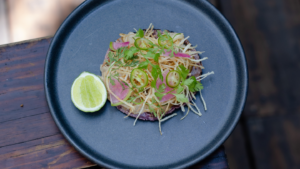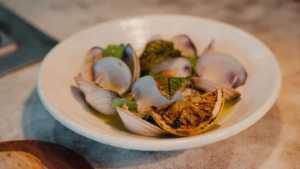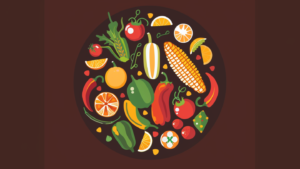(3 minute read)
When one thinks of Mexican produce, vivid images of avocados, chilies, and tomatoes might dance before the eyes. Yet, a gem often overlooked, but deeply embedded in Mexican culture and cuisine, is the guayaba or guava. Although grown at its largest numbers in India, Mexico is in the top three along with Indonesia to give life to this tropical and aromatic fruit. One that doesn’t merely tantalize the taste buds; it sings a song of Mexico’s rich heritage and surprising nutritional prowess.
Guayaba in Mexico’s heart
To truly understand the guayaba’s significance, it’s essential to trace its roots in Mexico. Indigenous communities revered this fruit, using it in various remedies and foods. Today, it remains a beloved ingredient in numerous traditional dishes that came after, beverages, and even religious ceremonies. For instance, during December’s Las Posadas, a tradition that spans nine nights, guayaba plays a starring role in the warm and aromatic Ponche navideño, a punch made with various fruits and spices.
Beyond sweet: Guayaba’s culinary versatility
The beauty of guayaba lies not only in its rich history but also in its adaptability within the kitchen. Often, fruits are relegated to a singular category – either sweet or savory. However, guayaba gracefully dances between both. Whether relished raw or enjoyed cooked, this fruit brings a delicate balance of sweetness and acidity that few other ingredients can claim.
If you’ve ever wandered the streets of any Mexican city, you’ve likely encountered the intoxicating aroma of ate de guayaba, a guava paste that’s a popular filling for sweets. Guava jam is a breakfast staple, spreading its pink-hued sweetness over toast or bolillo tostado.
Less known but equally delightful are the savory iterations of guayaba. Guava can be added to salsas, lending a fruity undertone to the heat of chilies. It can also be blended into smoothies, providing a refreshing backdrop to bold flavors.
Guayaba’s nutritional might
While citrus fruits, like oranges and lemons, often steal the limelight for their Vitamin C content, the humble guava quietly surpasses them all. Indeed, guayaba boasts more Vitamin C than most citrus fruits, making it not just a treat for the palate but also a boon for the immune system.
Aiding its Vitamin C content are an impressive array of antioxidants, dietary fiber, and vitamins that play crucial roles in skin health, vision, and overall wellness. It’s a superfruit, hiding in plain sight.
The future of Guayaba
As the world becomes increasingly global, there’s a profound opportunity for ingredients like guayaba to take center stage. With its versatility and nutritional pedigree, it’s poised to venture beyond Mexican borders, inspiring chefs and nutritionists worldwide.
It tells a tale of Mexico’s traditions, innovative cuisine, and the ever-evolving quest for delightful culinary
expressions.






